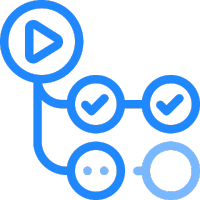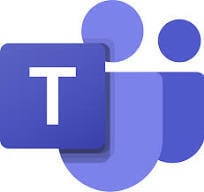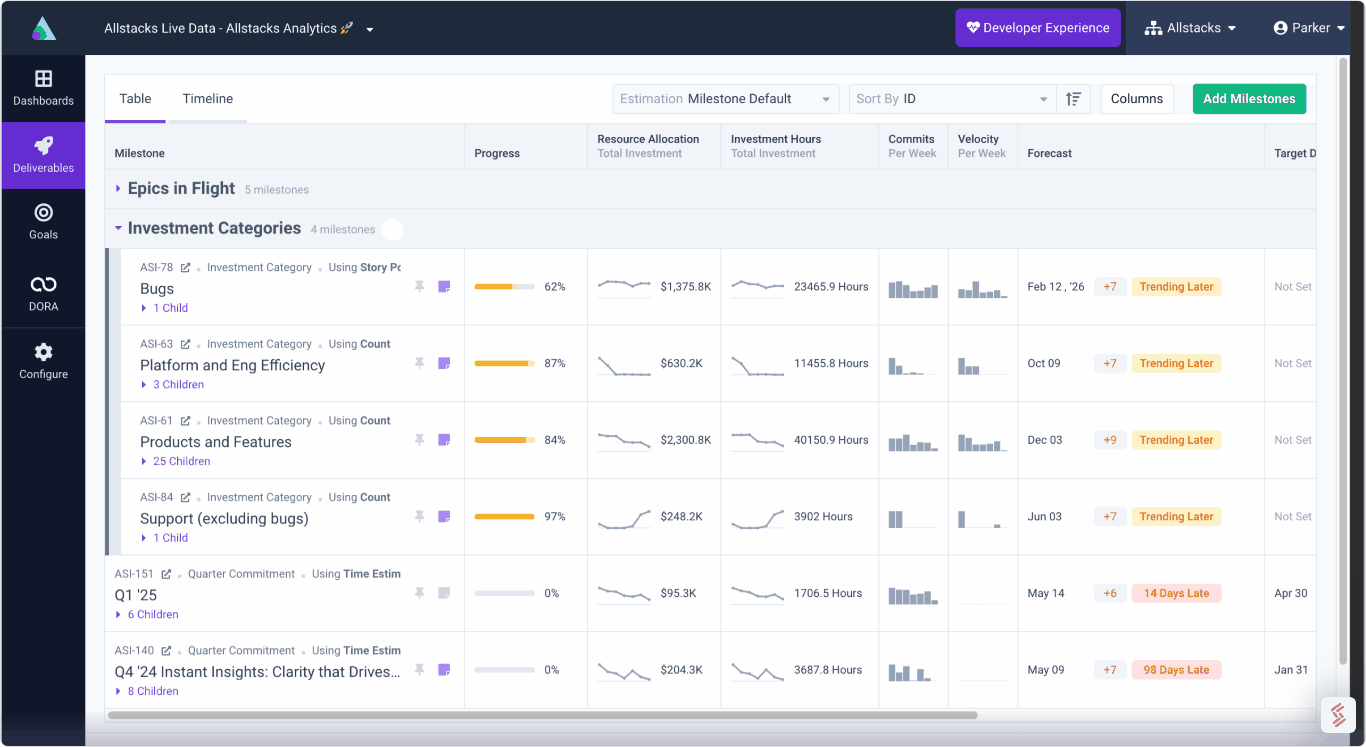.png)
Software Engineering Intelligence
-
Intelligence Engine
On-demand exhaustive AI-analysis
-
Engineering Investment
Complete visibility into time & dollars spent
-
360º Insights
Create meaningful reports and dashboards
-
Project Forecasting
Track and forecast all deliverables
DevEx
-
Developer Surveys
Create and share developer surveys
Software Capitalization
-
R&D Capitalization Reporting
Align and track development costs
Get a big-picture view of your software delivery process
Allstacks provides a comprehensive view of your software development process by connecting all the tools in your tech stack
Trusted by








































Source Code Management
Connect your SCM tools to unlock smarter software delivery
Engineering leaders lack a data-backed way to clearly understand how their teams are performing and how that work aligns with strategic objectives and impacts the business.

Azure DevOps
OAuth, Basic

Bitbucket
Cloud & Datacenter/Server API Token or OAuth

GitHub
Team & Enterprise Cloud, Enterprise Server App/OAuth

GitLab
SCM OAuth/Basic
Project Management
Streamline project progress tracking with project management integration
Stay on top of project tasks, milestones, and deliverables with Allstacks' project management integrations. Track progress, identify areas for improvement, and streamline your workflow for increased productivity and improved delivery timelines.

Azure Boards
Cloud / On-Prem, API Token or OAuth

Jira
Cloud, Data Center/Server, OAuth 1.0a, Basic (API Token)

JIRA Align
API token

ServiceNow
SPM, Basic
Linear
Cloud, API Token
Build & Development
Accelerate time-to-market with efficient CI/CD tool integration
Allstacks connects to your CI/CD tools, providing you with a real-time view of build and deployment progress and allowing you to identify and troubleshoot issues more efficiently—resulting in faster time-to-market for your software releases.

Azure Pipelines
Pipelines Webhooks

GitLab
CI/CD Webhooks

CircleCI
Webhooks

Jenkins
Cloud, On-Premise Webhooks

GitHub Actions
Actions Webhooks

Bitbucket Pipelines
Pipelines Webhooks
100s of others via Webhooks
Communication & Collaboration
Uncover how communication tools impact engineering productivity
Allstacks integrates with collaboration tools to give you visibility into how collaboration affects your team’s focus and flow. Identify patterns of interruption, track meeting load, and understand how communication habits influence delivery outcomes.

Slack
OAuth

Google Calendar
OAuth

Microsoft Teams
OAuth
AI
Gain visibility into the real impact of AI coding tools
Allstacks connects to your engineering systems to help you analyze the impact of tools like GitHub Copilot. By surfacing trends in development efficiency and code quality, you can clearly assess where AI is delivering value—and where it’s not.
GitHub Copilot

Cursor

